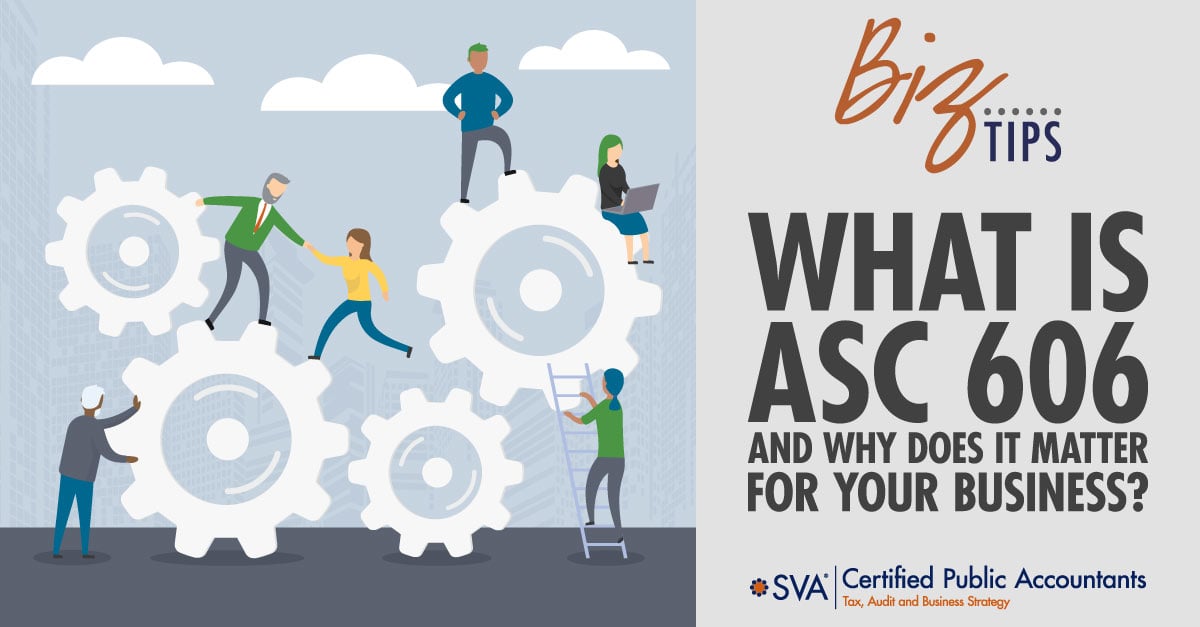| Highlights: |
- Defines ASC 606 as the FASB’s revenue recognition standard governing when and how businesses recognize revenue from customer contracts under U.S. GAAP.
- Explains the five-step revenue recognition model that businesses must apply to determine revenue timing and amounts.
- Discusses the shift from industry-specific rules to a single principles-based framework for consistency and comparability across industries.
- Notes common challenges in implementation, such as professional judgment, contract complexity, and the need for cross-department coordination.
|
Revenue recognition has long been an important area of accounting. To bring greater consistency and transparency to how businesses report revenue, the Financial Accounting Standards Board (FASB) introduced ASC 606: Revenue from Contracts with Customers.
This standard reshaped how companies across all industries recognize revenue. But what exactly does it mean, and how does it affect your business?
What is ASC 606?
ASC 606 is the accounting standard that governs how and when revenue should be recognized from customer contracts. It replaced a patchwork of industry-specific rules with a principles-based framework that applies to all types of organizations.
Public companies adopted ASC 606 in 2018, and private entities followed in 2019. The standard’s goal is to create greater consistency, comparability, and transparency in financial reporting, so that two companies delivering similar products or services recognize revenue in similar ways.
At the heart of ASC 606 is a five-step model that guides businesses through how to record revenue from contracts.
The Five-Step Model
The five-step model helps businesses determine when and how to recognize revenue. While the steps sound straightforward, each can include nuanced decisions depending on your contracts and industry.
1. Identify the Contract With a Customer
A contract doesn’t always mean a signed document. It simply represents an agreement that creates enforceable rights and obligations.
For instance, buying a box of cereal at the grocery store qualifies as a contract: you agree to pay, and the store agrees to provide the product. Even without a written agreement, a valid exchange occurs.
2. Identify the Performance Obligations
Contracts may include multiple deliverables. A software company, for example, might sell a license, annual maintenance, and implementation services. Businesses must determine whether each component is distinct or part of a single performance obligation.
3. Determine the Transaction Price
The transaction price can be simple (like the shelf price of cereal) or complex. In industries like construction, contracts may include variable considerations, or awards for early completion or penalties for delays. These require professional judgment to estimate what will ultimately be collected.
4. Allocate the Transaction Price to Performance Obligations
When a contract covers multiple obligations, companies must allocate the overall price among them based on standalone selling prices. For example, if a store sells an appliance with discounted installation, that discount may need to be split appropriately between the product and the service.
5. Recognize Revenue When (or as) Performance Obligations are Satisfied
Revenue can be recognized either at a point in time or over time. A retailer recognizes revenue at the point of sale, while a construction firm recognizes it gradually as work progresses on a project.
(Download Video Transcript)
What Makes Implementing ASC 606 Challenging?
ASC 606 requires businesses to apply professional judgment and stay organized across departments. Here are some of the most common challenges companies face:
Variable Considerations
Contracts often include elements like discounts, rebates, or performance-based incentives. Because the outcome isn’t known at contract inception, businesses must estimate revenue using historical data and revisit those estimates regularly, especially near year-end.
Contract Modifications
When contract terms change, companies must decide whether they’re modifying an existing agreement or creating a new one. Each scenario affects how revenue is recognized and can significantly change financial results.
Data Management
Tracking contract details, performance obligations, and revenue timing across multiple systems can be difficult, especially if each customer contract has unique terms. Many businesses establish standard contract templates to simplify accounting while still allowing for exceptions when necessary.
Cross-Department Coordination
ASC 606 isn’t just an accounting exercise. Finance, legal, and sales teams all play roles in crafting, interpreting, and documenting contracts. Collaboration helps avoid conflicts between legal protections and accounting requirements, ensuring contracts are both compliant and practical.
Outdated Systems
Older accounting software may not support ASC 606’s revenue recognition methods. While newer systems are more sophisticated, companies still need to use them effectively. AI tools can now help analyze contracts, identify key terms, and flag clauses that affect how revenue should be recognized.
Professional Judgement
Determining when control transfers to the customer is one of the most judgment-heavy parts of ASC 606. In manufacturing, for example, revenue recognition may hinge on shipping terms: whether control transfers at the shipping point or upon delivery. Getting the timing right is especially important around period-end cutoffs.
The Bottom Line
Although ASC 606 has been in place for several years, businesses continue to refine how they apply it. The standard encourages organizations to take a closer look at their contracts, strengthen communication across departments, and maintain accurate, transparent reporting practices.
While the rules may appear complex, the principle is simple: revenue should reflect the value delivered to the customer, at the time it’s truly earned.
© 2025 SVA Certified Public Accountants

